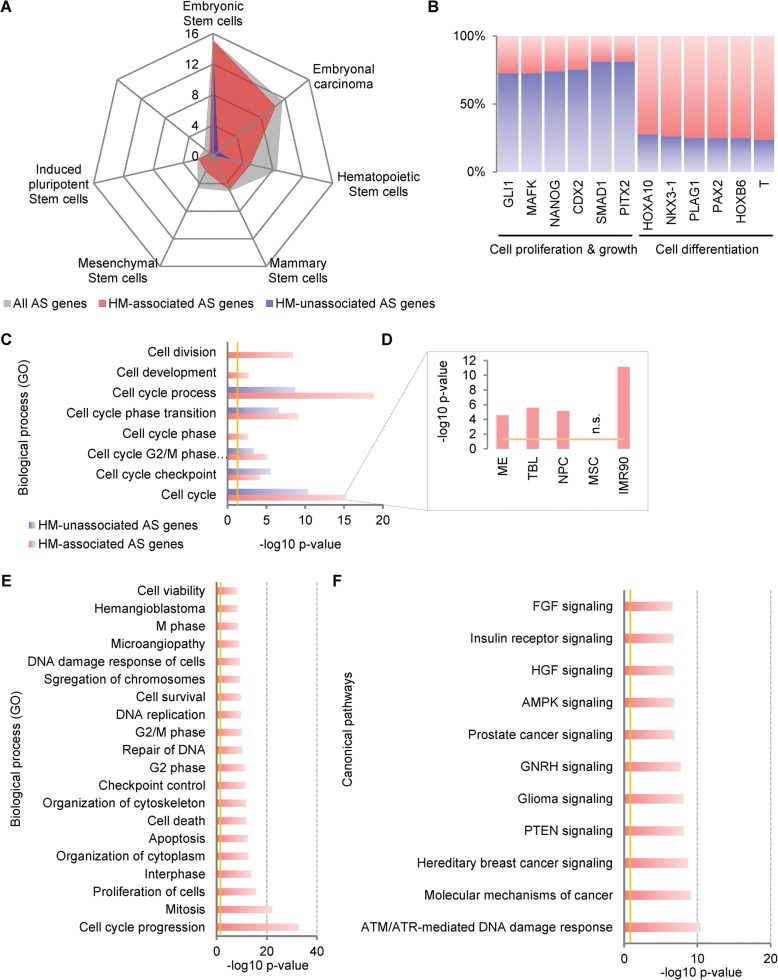Fig. 4.
HM-associated AS genes predominantly function in G2/M cell-cycle phases contributing to hESC differentiation. a HM-associated AS genes are enriched more significantly in stemness signatures than HM-unassociated AS genes. b TF binding enrichment shows that HM-associated AS genes prefer to be regulated by TFs involved in cell differentiation, while the HM-unassociated AS genes are prone to be regulated by TFs involved in cell proliferation and growth. c GO enrichment analysis shows that HM-associated AS genes are enriched more significantly in cell-cycle progression than HM-unassociated AS genes, shown as the -log10 p values after FDR (≤ 0.05) adjustment. d The significant enrichment of HM-associated AS genes in the cell cycle are consistent across cell lineages, with the MSC as an exception that no significant enrichment was observed. e The top 20 enriched functions show that HM-associated AS genes involved in cell-cycle progression prefer to function in G2/M phases and DNA damage response. f The canonical pathway enrichment shows that AMT/ATR-mediated DNA damage response is the top enriched pathway of HM-associated AS genes. The vertical lines (yellow) indicate the significance cutoff of 0.05. Also see Additional file 1: Figures S7, S8

